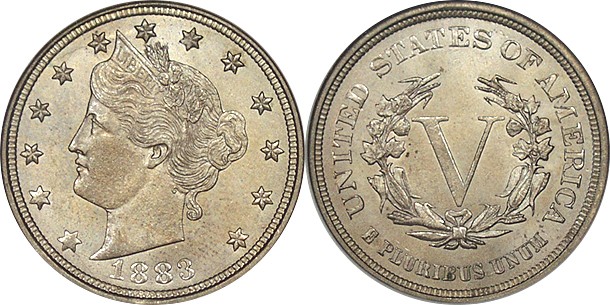
The Liberty Head Nickel (or V nickel) was not the most exciting coin in US history. Josh Tatum
allegedly added some excitement to the first year of issue, 1883, while Hawaii Five-O’s Steve McGarrett added interest
to the final year, 1913. In between, the series is somewhat dull.
Charles Barber
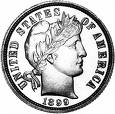
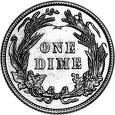
Charles Barber designed the liberty head nickel. His father, William was chief engraver of the mint, and hired his son as an assistant, despite what many saw as a lack of talent. When William Barber died, Charles took over as the chief engraver. Charles Barber was best known for his liberty head dimes, quarters, and half dollars, which are now called the Barber coins and were minted starting in 1892. In 1883, his version of the Liberty Head nickel was coined.
Josh Tatum and the Liberty Head Nickel
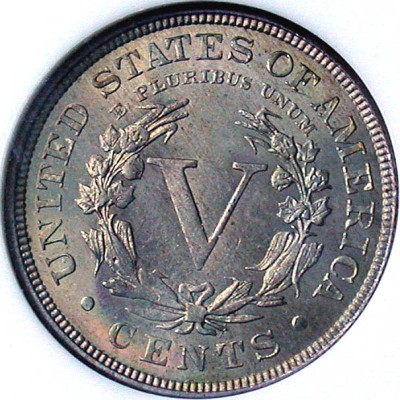
The nickel was virtually the same size as a five dollar gold coin. On the back of the nickel, was merely the Roman numeral “V” without any reference to cents or dollars. Some mischevous citizens gold plated nickels and passed them off as five dollar gold coins. According to a story, which will seem like old hat to numismatists, Josh Tatum enlisted a jeweler friend to gold plate the nickels. Tatum, who was deaf and mute, would purchase an item costing five cents or less and then hand the plated nickel to the cashier, who would give him change from five dollars. At his trial, Tatum was found not guilty of fraud because he never asked for change. The change given him was considered a gift.
Meanwhile, the mint quickly altered the design and added the word “Cents” to the back to discourage the practice of plating the coins.
Around numismatic circles, this incident is thought to be the origin of the phrase “just joshing.” However, further research suggests that the term “joshing” (meaning kidding) originated sometime before Josh Tatum. The phrase “to josh” may have been used as early as the 1840’s and probably originated as a combination of the words “joke” and “bosh.” The word may have been popularized by the writings of Josh Billings (whose real name was Henry Wheeler Shaw). Billings died three years before the introduction of the liberty head nickel. Josh Tatum was not well known in the 1880’s and probably had little to do with the phrase “joshing.” The entire story story may be fictional, as there do not seem to be any confirmed records of a trial of Josh tatum.
Collecting Liberty Head Nickels
A complete collection of regular-issue liberty head nickels consists of 33 coins. All coins were minted in Philadelphia until the final year of issue, 1912, in which Denver and San Francisco joined in. Most liberty head nickels are common with million produced each year. The scarce dates are 1885, 1886, and 1912S. Even during the great financial crisis of 1893, which caused a scarcity of silver dollars, nickels were still minted in large numbers.
The End of the Liberty Head Nickel
The liberty head nickels and the other barber coins were never popular with the masses. Among their critics was Teddy Roosevelt, who called the US coin designs “insipid.” He hired new artists like Augustus St. Gaudens, Adolph Weinman, and Hermon MacNeil. The liberty head nickel was replaced by James Fraser’s Buffalo Nickel in 1913.
1913 Nickel

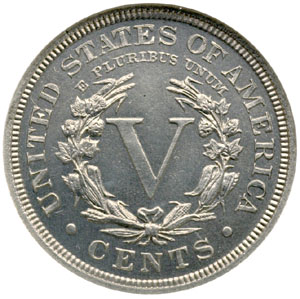
1912 was the final year for liberty head nickel production. However, in 1920, five liberty head nickels dated 1913 mysteriously appeared. Samuel Brown, a former mint employee, likely produced the coins himself. To cover his rear end, he had placed an ad in 1919 offering to buy such nickels. The ad seemed absurd, as no such coins were thought to exist. Then, one year later, Brown produced some. Hmmmm.
Hawaii Five-O and the 1913 Nickel
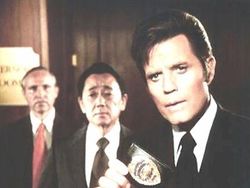
In 1973, the 1913 Liberty Head Nickel made a guest appearance on Hawaii Five-O. In an episode
entitled “The $100,000 nickel,” from Hawaii Five-O: Sixth Season
(episode 136), a slight of hand artist exchanged the authentic 1913 liberty head nickel for a forgery. To avoid being caught, he put the nickel in a vending machine, triggering a mad search for the coin.
The Missing 1913 Liberty Head
For many years, four of the five 1913 liberty head nickels were accounted for. The fifth had not been seen for decades. It was owned by George Walton, who purchased the coin in the 1940's for $3750. In 1962, he was killed in a ar crash while on the way to a coin show. The 1913 nickel was recovered from the site, but when his heirs tried to auction the coin, it ws deemed a fake. Suspicion had been arisen because a planchet flaw near the date gave the appearance of an altered date. The coin sat in a Virginia closet until 2003, when it was compared to its four siblings. The coin ws determined to be authentic. The planchet flaw and weakly struck ear of corn were characteristics of all 1913 liberty heads. For more information about the 1913 Liberty Head Nickel, please see the book: Million Dollar Nickels: Mysteries of the 1913 Liberty Head Nickels Revealed